| 1 | A snake anyone could meet |
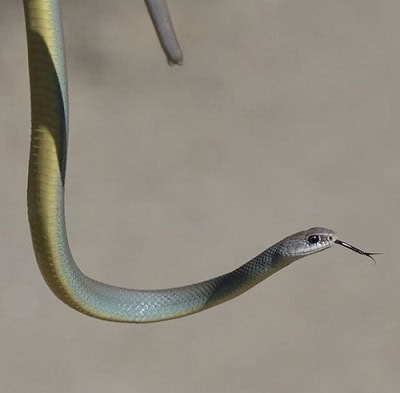
In Florida or Georgia, there’s no snake more likely to slither past a swimming pool, weaving beneath people reading books on deck chairs. There’s no snake more likely in Florida to slither through suburbia and stop your car in the middle of a street, or invade the local Publix or Walmart, sending people scattering. We’re talking of course about the black racer, AKA the eastern racer, AKA Coluber constrictor, a thin-bodied, fast moving snake which averages at 100-150cm.
This is a snake that covers virtually the entirety of the US mainland, and is one of the most comfortable in human habitats. Black racers are an energetic species which usually displaces by over 100 metres per day, and travels well over that in actual distance (because there’s plenty of back and forth).
The likes of striped crayfish snakes stick to St John’s River, while mud snakes stick to gloomy swamps, rubbing shoulders with alligators, but black racers regularly stray into towns and across scenic lakeside footpaths. Their natural habitat is grassland rather than claustrophobic forests or swamps, though they’re excellent tree climbers. Black racers are completely non-venomous, lacking even mild toxins in their saliva.
| 2 | Found in all 48 lower US states |
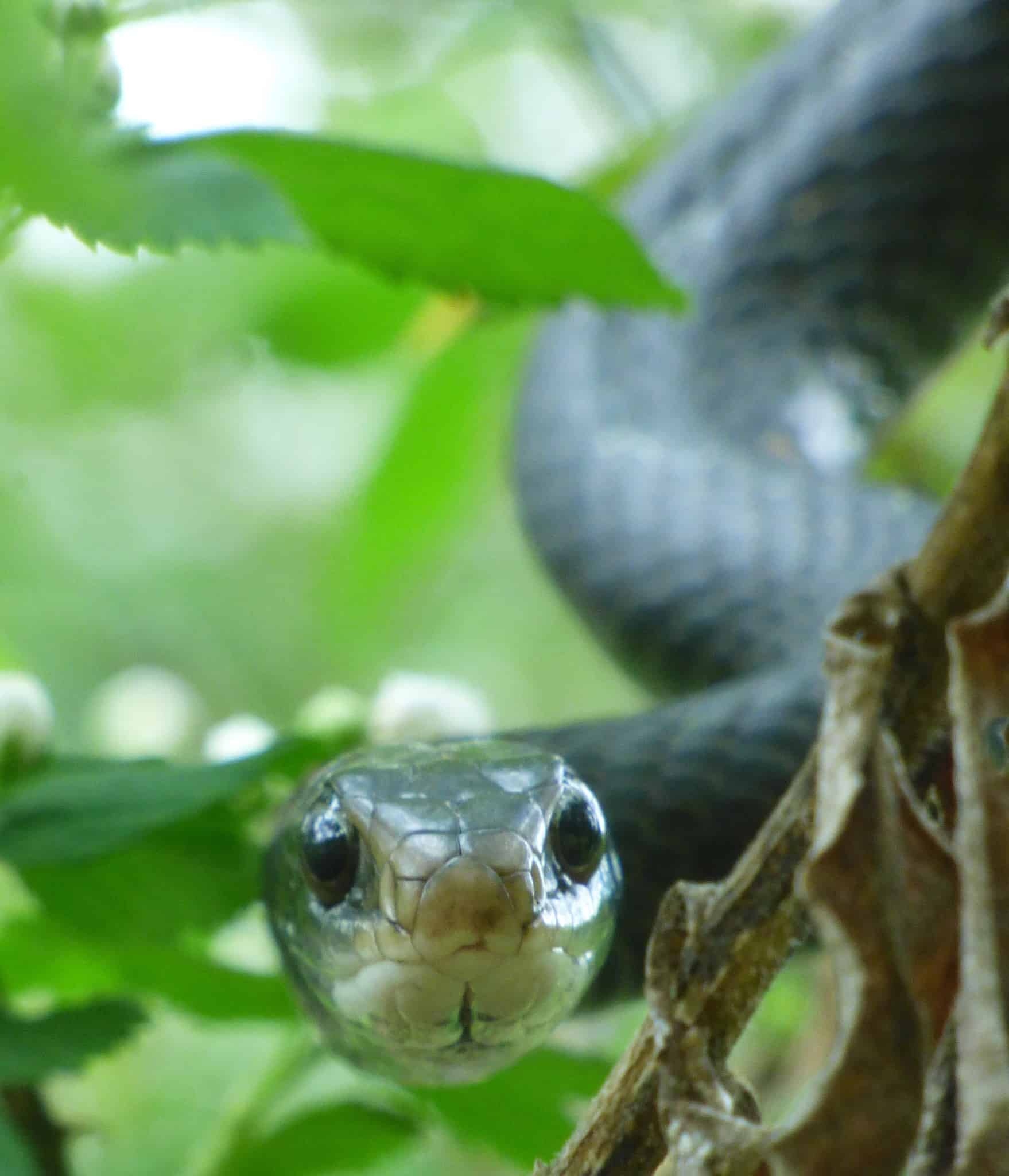
Black racers are an extremely flexible snake, beginning with their diet, which includes mammals, reptiles, amphibians and insects alike. They’re listed as “least concern” by IUCN and range from California in the west to Maine in the far east, and Canada in the north. They cope equally well with cold climates and sunny palm tree vistas.
Black racers were named for their high speeds, and while they can’t outrun a speeding police car, they travel at a respectable 4 miles an hour, outstripping the average human walking pace. When flustered and panicked, they can escape at even faster speeds. Black racers are a highly curious snake and often raise the upper quarter of their body to scan their surroundings, peering curiously with their round (not vertical) pupils.
Black racers are almost completely diurnal rather than nocturnal, moving very rarely by night, partly because they’re especially reliant on eyesight rather than scent for their hunting.
| 3 | Escapes frantically or bites frantically |
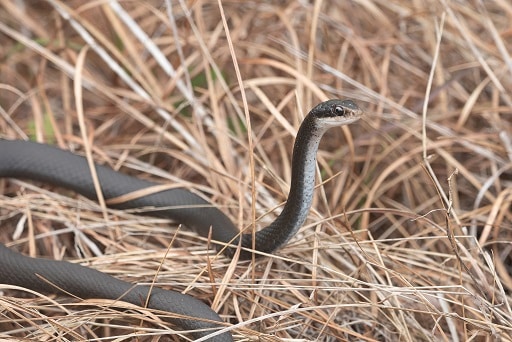
When approached by a human, a black racer’s first impulse is to disappear into the undergrowth at top speed. If cornered with no room to escape, they’ll bare their mouth wide and make stabbing, lashing bites in mid-air, usually without making contact. This is a mock assault, but if picked up, black racers will use their reasonably sharp fangs to make painful lacerations, which can easily draw blood. Eyes are apparently the trigger to initiate a storm of bites to your unprotected face. They can also vibrate their tails against leaf latter, making a low buzzing noise.
Black racers vary their defensive strategies based on species. In October 2007, a scientist stumbled onto a strange scene in Aiken, South Carolina. It was a 1 metre long black racer lying motionless between two cats, 50cm away on either side, which were staring at the snake. It looked stone dead, but when the scientist picked the black racer up, it remained limp for 10 seconds, then reactivated.
The next day, another 1 metre black racer (probably the same one) was spotted lying next to one of the two cats. Again, it was completely immobile and floppy. This time, the cat was removed, before the scientists nudged the snake. The black racer immediately blasted into the bushes at high speeds. With humans, they enter a wild frenzy, whether fleeing or assaulting. With cats, which are probably more skilful at pursuit, they apparently feign death.
| 4 | Attacks mid-air insects |
Studies reveal that insects comprise a sizeable portion of Coluber constrictor’s diet, even as adults. For example, a study from Illinois found stomach contents of 48% insects, 43.5% mammals and 12% reptiles. Crickets and beetles have been recorded, and according to data from Antelope Island in Utah, they’re especially fond of grasshoppers.
Rather than hoovering insects up as they cling to rocks, black racers aim for them directly. In May 2004, in Rutherford County, Tennessee, scientists zoomed in on an adult male black racer using a binoculars, which was near a swarm of gnat-like insects. Over 10 minutes, the racer made repeated stabbing lunges into the dark insect cloud, raising its upper body off the ground with its mouth hanging open. The scientists were too far away (15 metres) to tell whether the snake actually succeeded.
The black racer lacks any subtlety and just mindlessly attacks, succeeding some of the time. They also try to pluck birds out of mid-air, according to a 2020 sighting in Tickfaw State Park, Louisiana.
| 5 | A communal hibernator |
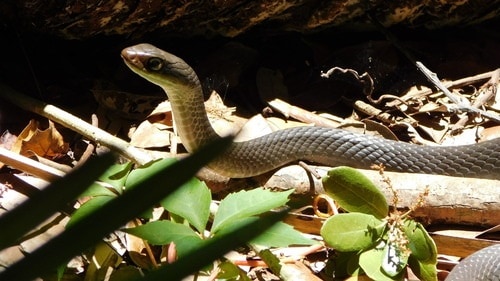
Black racers are usually solitary like all serpents, but during winter, they’re famous for hibernating in large groups. While they don’t reach the 20,000 once found for common garter snakes (inside a sinkhole in Manitoba), they can lurk in underground mammal burrows in groups of 100, more typically 10 or 15. They’re also comfortable hibernating alongside separate species, like northern watersnakes or even venomous copperheads.
Black racers are extremely faithful, remembering old dens, according to a 1971 study that tracked snakes after their spring emergence. 283 black racers survived the active season, and of those, 93% returned to the previous year’s hibernacula, with 7% choosing a fresh site. This shows some intelligence as well. They also travel huge distances to their summer feeding grounds, moving 1.8km in Utah, and 2.3km in Michigan, and still remember how to return to their winter dens.
That said, this love of hibernating communally ends in disaster occasionally. In Saskatchewan, Canada, a slumping of an underground hibernacula led to a 50% reduction in the amount of black racers found in the local vicinity. It was a case of putting all their eggs in one basket.
| 6 | Lives harmoniously with random snakes |
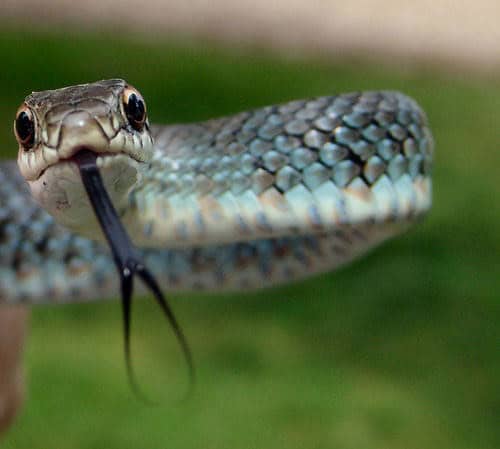
Another epic failure happened in April 2008 by the edge of a pond in Missouri. There was a hibernacula entrance just 3cm wide, and 4 eastern racers inside were attempting to exit in a mad scramble, each blocking each other’s passage. Apparently, they weren’t intelligent enough to realise that backing off would set all of them free. 2 were already dead, and 2 alive.
The scientists then reached inside the dark burrow and captured a further 12 eastern racers, with more that they couldn’t reach. Other species rested inside too: a northern watersnake, prairie kingsnake, plain-bellied watersnake and 4 black ratsnakes.
Black racers range from sunny Florida to frigid Maine, so you’re probably more likely to find these giant accumulations further north, where they need to preserve warmth. Another group was found by students near Southeastern Louisiana University, below sheets of tin metal. It contained 6 snakes of 4 species: 2 black racers, 2 grey ratsnakes, 1 cottonmouth and 1 western ribbon snake. A black racer and grey ratsnake were even intertwined with each other, with their coils less than 1 inch apart.
| 7 | Gets into sticky situations |
Of all US snakes, the black racer might be the one with the least fear, the least restraint, and the most self-confidence, even overconfidence. This sometimes leads them to great things, but also grisly demises:
Train tracks – in April 2013, scientists were radio-tracking a black racer in Aiken County, South Carolina. Their tracker led them to a railway track, where they found the Coluber constrictor sliced in two. This snake had been tracked since April 2010, and had previously crossed the railway line four times.
Spiders – inside an aircraft hanger in South Dakota, scientists discovered a juvenile black racer trapped in the web of a common house spider. Initially, its tail was caught, and the snake was trying to escape the web, but two days later, the entire black racer was stuck in the spider’s trap. The spider itself was feeding on the racer around its neck, possibly after liquifying its flesh.
Birds – because of their liking for open territories, black racers are irresistible bird prey, and especially for the red-tailed hawk. According to a survey by Washington state’s Colombia river, Coluber constrictor was the top reptile prey of this bird, at 21.3% of 150 prey recorded, just surpassing the gopher snake at 18%.
| 8 | Extremes of their territory |
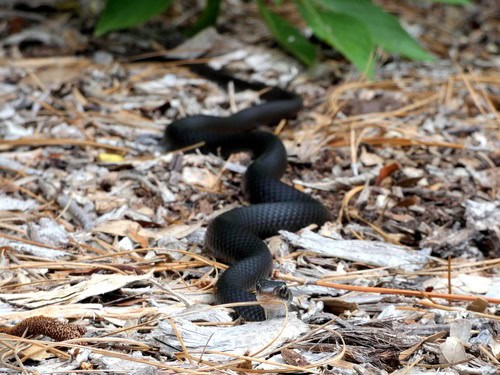
Incorporating all 11 subspecies, black racers have a colossal range. They’re the only snake to inhabit all 48 lower US states, as the common garter snake inhabits 47, but has no foothold in Arizona. The black racer only has miniscule pockets in Arizona, but is still clinging on. To the south, their range descends deep into eastern Mexico, and even into Guatemala and Belize.
The northerly limit lies in western Canada, in British Colombia, where they reach hundreds of mile north of Vancouver, without getting anywhere close to Alaska. The common garter snake has the advantage when it comes to northerly reach (rumoured to reach Alaska).
The all-time record black racer measured 190.5cm. This belonged to the northern subspecies (Coluber constrictor constrictor), a common version ranging from Maine to the Carolinas and Georgia. The primary Florida version is C. constrictor priapus, which peaked at 165.1m. The shortest record belongs to the primary Mexican version, the Oxacan racer (C. c. oaxaca), at just 101.6cm.
The rarest subspecies of the 11 is the brown-chinned racer (Coluber constrictor helvigularis), which inhabits only a small pocket of the Florida panhandle.
| 9 | Interactions with fellow snakes |
While snakes don’t make up a huge portion of Coluber constrictor’s diet, they’ll gobble up any they slither past, even snacking on strongly venomous ones like copperheads occasionally. In March 2012, a scientist found a roadkill eastern racer in North Carolina, and dissected its corpse. It had 3 whole snakes in its belly at once: a common wormsnake (Carphophis amoenus), common garter snake and northern watersnake. The list of snakes on their menu is vast for a snake not dedicated to them, including ring-necked snakes, southern hognose snakes and northern watersnakes.
In June 2008, an eastern racer was spotted chasing after a dark snake, which turned out to be a fellow member of its species. The smaller, 98cm C. coluber tried a nifty trick, wrapping its body tight around a dangling vine and anchoring itself in place. But in a struggle lasting nearly an hour, the larger, 143cm predator eventually wrested it free and swallowed it down.
Eastern racers are also proven scavengers, swallowing up roadkill specimens of the rough green snake. Eastern racers were the first confirmed snake predator of the checkered garter snake (Thamnophis marcianus).
| 10 | Nemesis: fire ants |
Yet another threat is insects. In June 2012, scientists discovered 11 snake eggs in Covington County, Alabama, below a partially rotten pine log. Colonies of fire ants were heading back and forth, and each egg had tiny 2mm perforations, like they’d hacked entry inside. Inspection revealed empty, hollowed out eggs, but 2 contained embryos that were still alive. These were proven to be black racer embryos. The scientists deemed this as proof that invasive fire ants (poisonous to humans) hunt unborn snakes, gobbling them up while unhatched, slightly denting their populations.
Another threat is invasive black spiny-tailed iguanas, which pick up black racers in their mouths, shake them around furiously, and drop them to the ground without bothering to eat them, similarly to a dog and a stick. Island foxes (Urocyon littoralis) have also been spotted with black racers in their mouths. Coluber constrictor is confirmed prey for two invasive amphibians – the Cuba treefrog and the infamous cane toad.
Despite these endless threats, black racers are a thriving species in the USA. Nothing can keep them down, though they’d probably be even more dominant otherwise, covering every inch of every parking lot and sidewalk and swimming pool terrace.